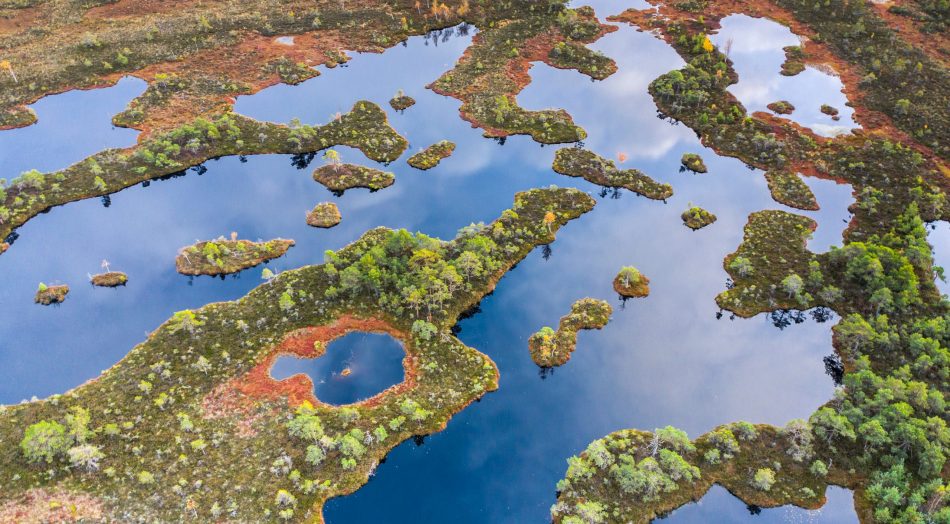For those in the world who have to live with it, you may wonder “what on earth is peat good for?”
Peatland is a mossy wet mass that you can’t build on, you can barely walk on, you can’t grow crops on it, and all its stagnant water is a breeding ground for mosquitoes which bring disease. Humans have found a use in burning it. Scotch whiskey lovers will know that it’s used to heat the barley which gives the drink its smoky flavor.
There is, however, a major use for peat that has gone overlooked.
The world’s peatlands store twice as much carbon as all the world’s forests combined.
How do these bogs and swamps help?
Peatlands are made up of thousands of years of moss piled up on each other, but because these areas are so wet even plants and shrubs that died a very long time ago can’t fully decompose. This means that they can’t release their carbon.
Their secret to trapping carbon and retaining their moisture is the sphagnum mosses that grow in peatlands. These starry shaped mosses are able to retain up to 26 times their weight in water.
Funnily enough, these soaking peatlands can also preserve human-made objects such as wooden wheels or boats. Even humans that have been trapped in peat have been turned into mummies after epochs under the moss.
Only recently have people really started appreciating the service that these stinking morasses provide us. Peatlands are one of the best carbon sinks in the world.
A great fuel, but also a potential carbon emitter
The millennia-long build of biomatter underground turned peat into a great fuel. Many peatlands — such as in Britain, Holland, Canada, and Indonesia, to name a few — have been drained and their peat burned for fuel. This has energized certain movements in human history, but this elimination of peatland also can release all of its stored carbon into the air.
For peat’s sake, save the peatland
Finally appreciating the job that peat was doing to trap the world’s carbon, conservation groups are working to preserve and even reinvigorate the world’s peatlands. Groups such as the Rotary of Great Britain and Ireland are trying to ban the burning of peat as an amateur fuel, and the International Union for Conservation of Nature UK is trying to preserve the UK’s peatlands by blocking drainage and remoisturizing the areas. If you’d like, please contribute to one of these efforts to preserve the world’s peatlands.











